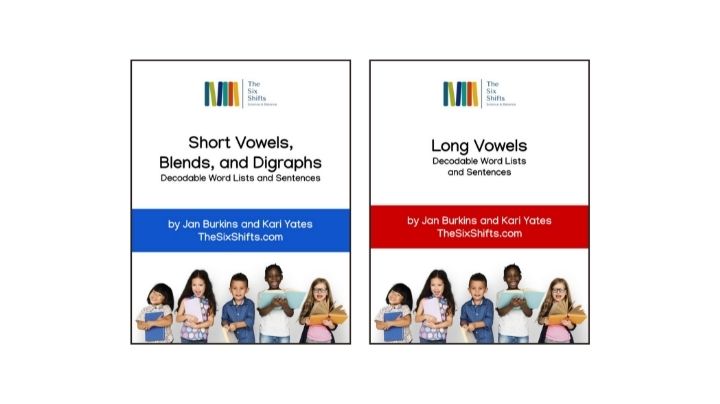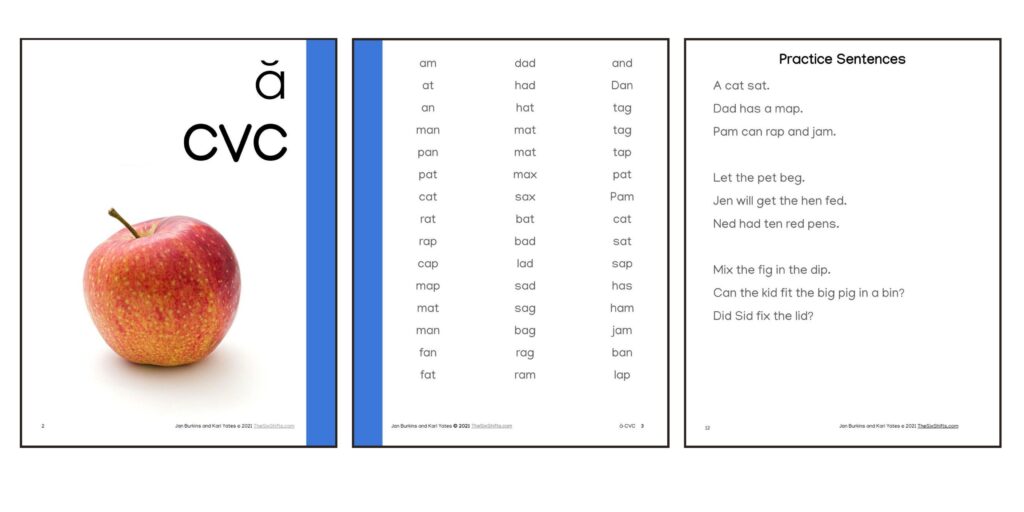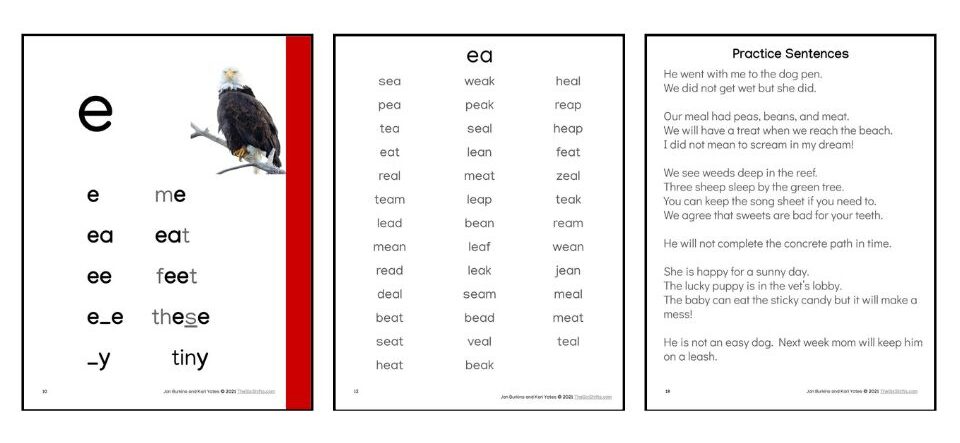Maybe you already knew about our Decodable Word Lists and Sentences. Maybe you didn’t.
Maybe you saw the lists and weren’t sure what to do with them.
Whatever the case, we want to offer seven simple ways to use these resources to enhance your phonics instruction and give kids the high volume practice they need with both new and review sound-spellings.
There are two sets of decodable word lists and corresponding decodable sentences.
- Short Vowels, Blends, and Digraphs – This collection focuses solely on single syllable words with short sounds (closed syllables). Essentially, there are four spelling patterns involved for each of the five short vowel sounds (VC, CVC, CCVC, CVCC, CCVCC).
- Long Vowels – This collection contains word lists organized by long vowel sound. For instance, all of the spellings for /ā/ are in the same section. However, there is a separate word list for each of the most common spellings for /ā/ (a_e, ai, ay, a) to support separate instruction for each one.
So, how are these tools meant to be used? There are endless ways, really. -especially when you consider the innovative spirit of teachers like you. Our intention in designing these lists was that they could be used flexibly by any teacher and could supplement any phonics curriculum or scope-and-sequence.
So, to be ready for next week’s post, we recommend you print these tools, get out the three hole punch, and put them in a three-ring binder tabbed by spelling pattern. And you might want an especially pretty binder, because we think this is a resource you’re going to want to have close at hand for a long time.
Next week, we will offer you seven ideas for using these word lists to support your students as you work to make learning to read easier for them.






Thank you! This is an amazing resource.
Enjoy!